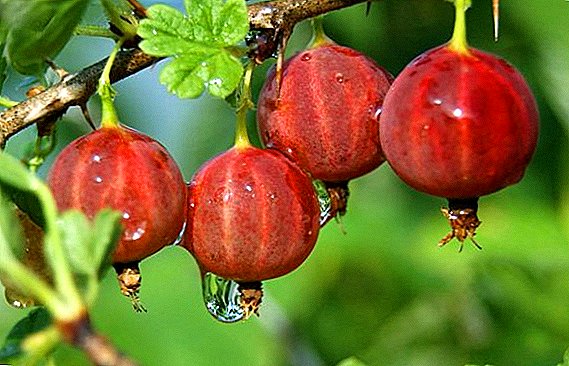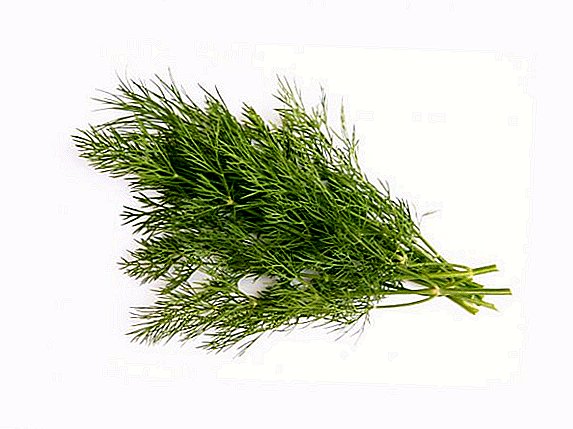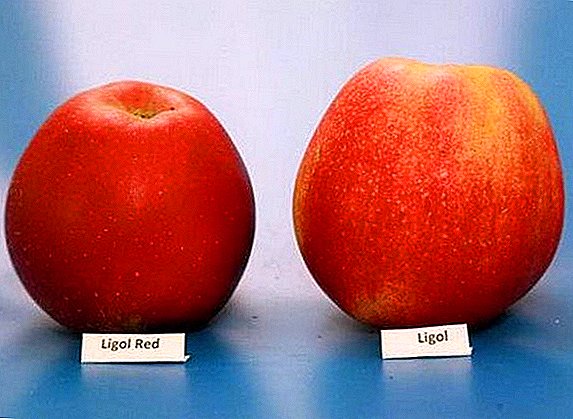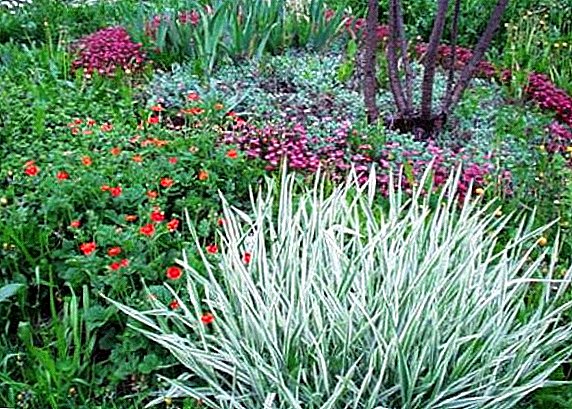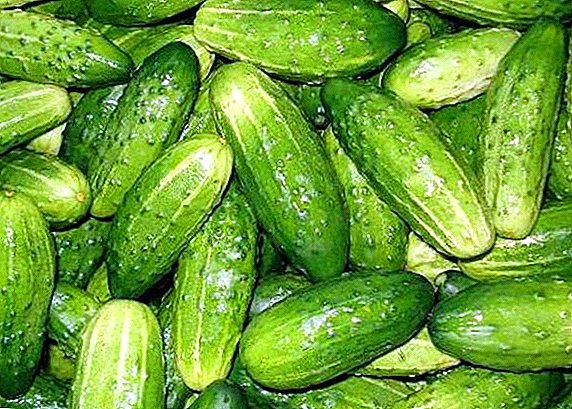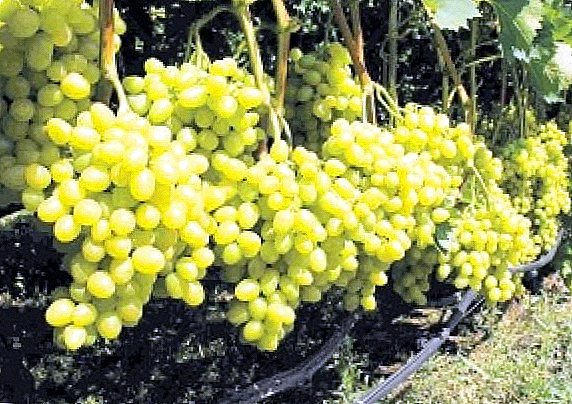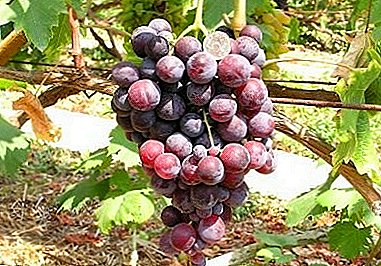
It is hard to believe that this is delightful in all respects. fruit with the solemn name "Cardinal", appeared not in the south of France, where he is so loved unprecedentedly, and not in esthete Italy, where the one whose status he was named was so significant, but on Western shores of the New World, and most recently by historical standards.
Origin
Among the 10 000 grape varieties existing in the world, some of which are presented on our website, it is generally recognized stands out for its exceptional spectacular large berries, the color palette of red-purple tones, and inimitable light nutmeg aroma of crisp light green flesh. Muscat of Hamburg, Pleven and Delight are close to it.
He is a dear guest at the festive table, a delicious snack for dessert wines, a source of health and endorphins - the hormones of joy.
It seems that its bright brown shoots and five-blade brilliant leaf look at us from all landscapes of the Mediterranean.
But Distant California became home to the variety in the twentieth centurywhose geographical latitude, even in comparison with Italy, is closer to the equator. Another spectacular guest of our gardens, originally from California, is the Grape of Witch's Fingers.
This is where this varietal masterpiece comes from. heat-loving nature and such vulnerability to adverse conditions: Happen to rain and slightly cold - gray rot appears on the leaves.
As the first person in the community of table varieties, he requires careful attention to himself and constant care, but all the difficulties of agrotechnology are paid off by the commercial commodity type of the solar berry.
The size of the berries "Cardinal" reaches 40 mm in diameter. This berry does not eat in one bite. Another representative of grapes with large berries is the Atos variety.
Resilience signs
 In creating a variety, as a rule, to give a new plant predictable optimal qualities use the features of 2 parents, making its appearance justified.
In creating a variety, as a rule, to give a new plant predictable optimal qualities use the features of 2 parents, making its appearance justified.
"Cardinal" inherited:
- from a variety popular in the South of Europe and North Africa "Queen of the Vineyards" long clusters of early ripening fruits and unique taste with nutmeg aroma. A plus - early fruiting (110 days from the time of the opening of the kidneys);
- "Alfons Lavalle" gave the berries of the created variety color, incomparable value (up to 6 grams.) and the reference beauty of the appearance of brushes. A plus - high yield (up to 160 kg / ha).
Thus, the new variety "Cardinal" began its march around the world, which became the basic basis in the process of sorting this crop in different countries:
- In Bulgaria his relatives became "Maritsa" and "Plovdiv -2";
- in France - 6 hybrid versions;
- in Russia - varieties "Arcadia", "Sofia", "Hope", "Monarch", "Transfiguration", "Anapa Cardinal" and many others.
In our country, now this variety is not only decoration of greenhouses and greenhouses, but the culture for open ground, however, is still only in the southern regions: Krasnodar and Stavropol Territory, in the North Caucasus, in the Crimea. Under the same conditions, varieties Demeter and Mavr can give good results.
Interesting: In the 18th century, royal gardens were established in the village of Izmailovo near Moscow. One of them was called - "Grape", but the main things on its beds were only greens and cabbage.
What attracts and causes concern among gardeners?
- The advantages of the "Cardinal" as a table variety include:
- reduced terms of fruiting (we eat fruits in mid-August);
- bountiful harvest
(up to 102 c / ha); - decorative beauty of large berries;
- small amount of seeds
(2-3); - trade dress long brush;
- sweetness and acid are balanced in the taste of berries, which makes it refreshing;
- fruits tolerate transportation and storage for up to 3 months;
- the plant tolerates drought painlessly;
- Disadvantages that can be tolerated or need to be addressed:
- yield instability;
- increased thermophilicity and vulnerability to cold throughout the growing season;
- flower discharge when weather deteriorates in the period of flowering, as a result - pea berries;
- grapes vulnerable to putrid bacteria all kinds;
- has a low threshold for winter hardiness (-19).
Variety description

- In comfortable conditions of excess heat and sun, typical of his homeland, grapes give an increase in shoots up to 3 meters high.
However, its power of growth can also be determined as average;
- Escape (round in cross section) immediately becomes a bronze-brown color, matures by 2/3, has a sufficient number of leaves;
- Five-lobed leaf, dark green, shiny, with pronounced teeth on the edge. Young leaves are light green with bronze. By autumn the leaf turns yellow;
- Flowers bisexual, small, light green, gathered in a brush. They have pestle as gynzea, androceia - stamens. Pollination is good;
- Cluster loose, largeon a long comb that visually increases the length of the hand (up to 25 cm). Form - a combination of a cone with a cylinder, the formation of a wing is possible. The comb is easily separated from the stem, which facilitates harvesting;
- Berries, an impressive size (16h26mm) and weighing up to 6 grams., have a thin skin of all shades of red and lilac and are covered with a thin layer of prune (wax). The colorless juicy pulp with 2-3 large full-grained grains is characterized by a refreshing sweet-sour taste (sugar to acid ratio 2: 1), with a predominance of sweetness, and the presence of noble notes of nutmeg in the aroma;
- On the shoot it ripens simultaneously up to 2 brushes weighing up to ½ kilogram;
- Evaluation of taste on the tasting scale - 8.9 points.
The same properties are possessed by the variety Graf Monte Cristo and Delight.
A photo
Photo grapes "Cardinal":



Features
- The power and spreading of the bush, which allows for double-shouldered or fan-shaped formation;
- High yield potential, characterized by instability;
- The efficiency of fruiting vines to 95% with uneven maturation of berries in the brush;
- On the bush, usually, over 60 fruitful shoots;
- Extremely early ripening (105 days from the beginning of the growing season);
- High commodity and commercial merits;
- Nobility and refinement of taste;
- Good portability of transportation and storage up to 3 months after removal;
- High efficiency of quality of a stock in selection work;
- Sensitivity to changes in weather, climate, cold winters (late spring - a reason for pea berries);
- Vulnerability to bacteria of all kinds, susceptibility to bacteriosis and bacterial cancer;
- Demands on agricultural technology.
Important: In addition to the choice of the sunny side, fertile soils, light loams or sandy ashes are preferable for the variety.
Parental functions
The exceptional appearance and taste of this variety make it a desirable object of selection work. The attraction of the "Cardinal" as a parent plant in a pair is guaranteed to transfer to the new hybrid commodity merits (the size of the berries, the taste, the aroma).
Grafting on a frost-resistant stock allows you to expand the cultivation area of this crop, giving the fruit an improved appearance and tasting qualities.
This idea was armed by the staff of the Zonal Experimental Station in the city of Anapa.
 As a result of crossing they brought out 16 promising forms on the basis of "Cardinal", improving its frost resistance and resistance to infection with fungus.
As a result of crossing they brought out 16 promising forms on the basis of "Cardinal", improving its frost resistance and resistance to infection with fungus.
Some of these breeding specimens have already been sold in amateur gardens and vineyards, and even acquired industrial cultivation in the North Caucasus, after being included in the State Register.
Varietal line of hybrids bred on the basis of stock "Kriulyansky" (Moldavian frost-resistant variety) and "Cardinal":
Title | Breeding number | Fruit color | Tasting score |
"Dawns of Anapa" | B-19-1-17 | red | 8,6 |
"Prikubansky" | Р-74-2 | dark violet | 8,6 |
"Lunar" | Р-27-2 | pink and white | 8,7 |
"Cardinal Anapsky" | included in the State Register | red-purple | 8,7 |
"Taman" | B-27-3 | Dark red | 9,0 |
"Cardinal" on Russian soil
If in the conditions of the Southern coast of Crimea the Californian guest quickly adapted, it was possible to advance it along the Volga, up to Saratov, only thanks to the interspecific hybridization, which gave:
- Grade "Cardinal Anapsky" ("Cardinal AZOS", "Cardinal AZOSiV", "Cardinal Lux", "Cardinal Sustainable") - grapes with table qualities of the famous "American" and Moldovan-style qualities useful in the harsh climate of Russia under the name of "Criuleni".Reference: Late-ripening table variety with pink berries - “Criulyanskiy” has resistance to survival without shelter in frosty winters at temperatures as low as -28 ° C. But even more important: it is invulnerable to putrid diseases, spider mites and even phylloxera.
Here are the makings of the "Cardinal Anapsky" from parents:
- average ripening;
- strong growth of bushes;
- high yield (maximum - 130 c / ha);
- resistance to infections (3.5 points);
- low temperature tolerance (up to -22 ° C);
- fruit mass bunches up to 1 kg;
- medium bunch friability;
- berries (from dark pink, red to dark blue, almost black) weighing up to 9 g .;
- sugar content up to 21% (for "Cardinal" - 18%);
- taste rating - 8.7 points.
- Variety "Crimean Cardinal" (K-81) - one of the forms of the family "Cardinal" x "Kriulyansky", rooted in the Crimea.
Having kept the selection achievements of the Anapa counterpart (frost resistance and disease resistance - 3.5 points), the Crimean relative acquired:
- earlier maturation (105 days);
- pink color of large berries;
- greater expressiveness of nutmeg taste;
- increased mass of medium bunch - over a kilogram;
- reduced tasting score - 8.1.

Last tip
- Table berries, such as Alexander and Lily of the Valley, often suffer from birds and wasps when ripe. Protecting your crop, you should take care of the fine-mesh network shelter of the entire bush or bags of gauze-type fabric for each brush;
- For the "Cardinal Californian" variety, the origin of each new seedling and how it is packed with the purchase is especially important.. After all, the malicious enemy of grapes - phylloxera infects in the process of transfer. For interspecific hybrids AZOS, this threat is not so terrible. Perhaps that is why our gardeners are so actively looking for planting material of this particular variety.
The forums on the Internet are seriously discussing the cultivation of "Cardinal Anapsky" in the southern Urals and Siberia. Maybe in the near future, inquisitive national breeders will begin to grow a habitual guest from California on their plots.



